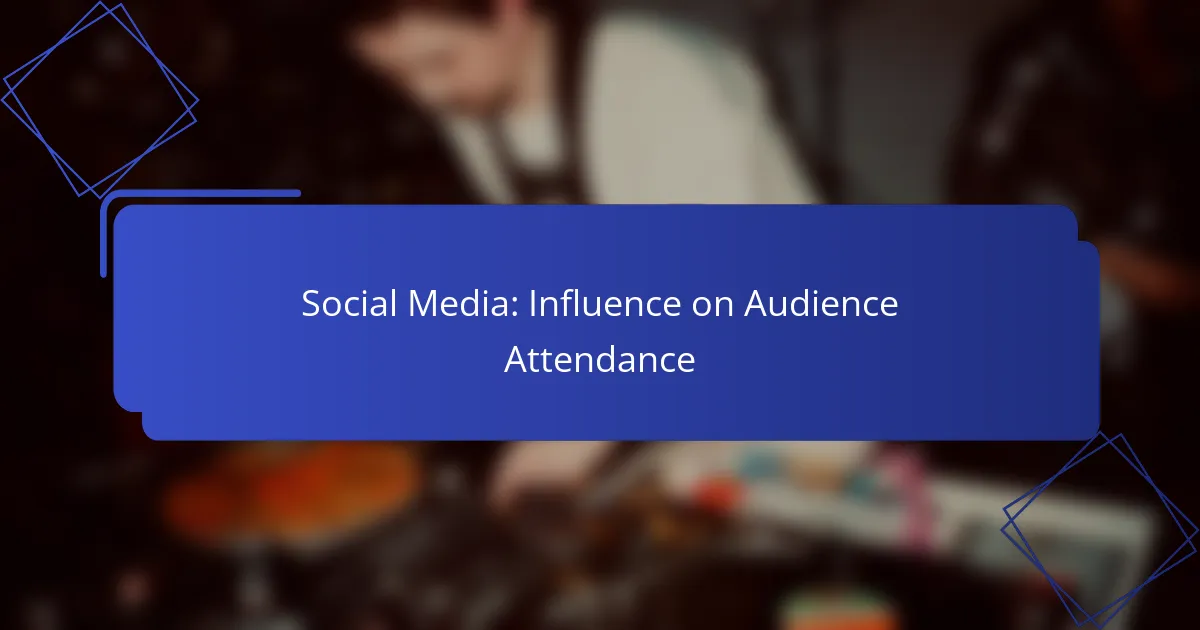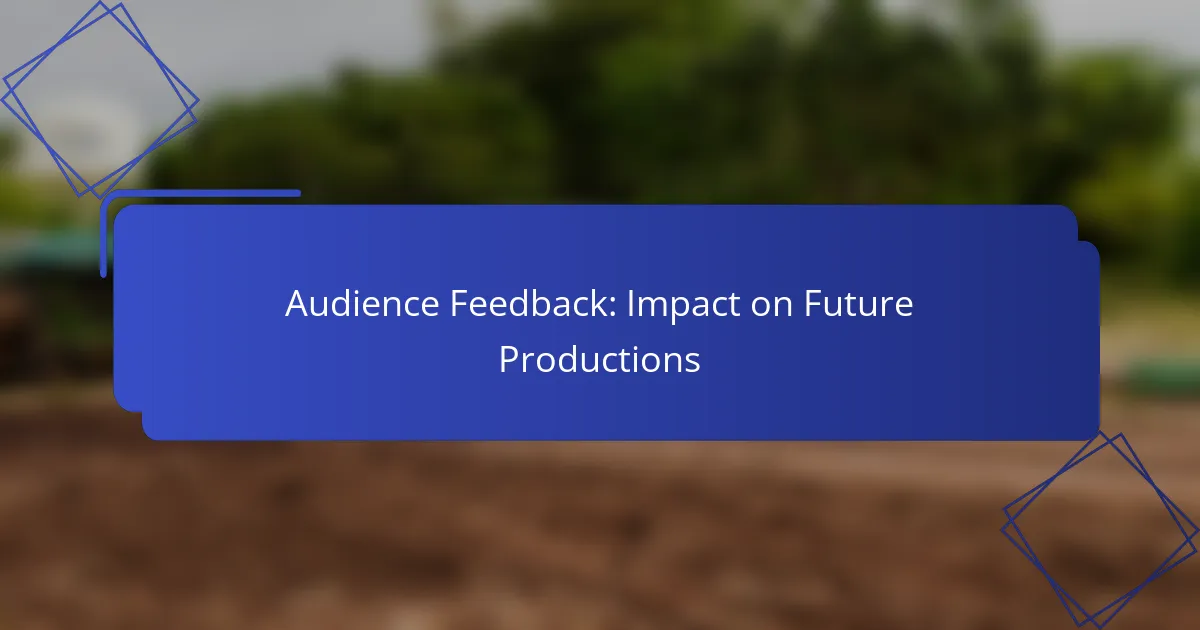Social media plays a crucial role in influencing audience attendance at events by increasing visibility and fostering engagement among potential attendees. By utilizing targeted strategies such as influencer partnerships and event-specific hashtags, organizers can effectively connect with their audience, ultimately driving higher turnout rates.
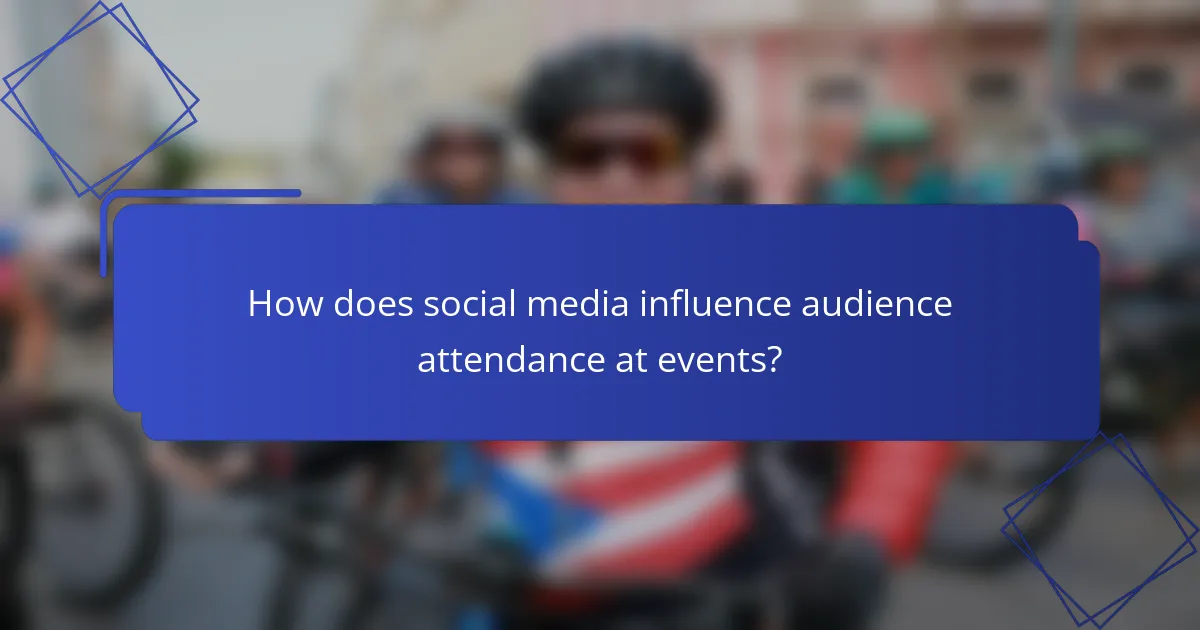
How does social media influence audience attendance at events?
Social media significantly impacts audience attendance at events by enhancing visibility, fostering engagement, and creating a sense of community. These platforms allow event organizers to reach targeted audiences effectively and encourage interaction, which can lead to higher turnout rates.
Increased visibility through targeted ads
Targeted ads on social media platforms enable event organizers to reach specific demographics based on interests, location, and behavior. This precision helps ensure that promotional content is seen by individuals most likely to attend, increasing the chances of higher attendance.
For example, using Facebook Ads, an event can be promoted to users in a particular city who have shown interest in similar events. This approach can lead to a significant increase in ticket sales, often by tens of percent compared to untargeted advertising methods.
Engagement through interactive content
Interactive content, such as polls, quizzes, and live Q&A sessions, can boost audience engagement on social media. By involving potential attendees in the event planning process or providing sneak peeks, organizers can create excitement and anticipation.
For instance, hosting a live stream with behind-the-scenes content or allowing users to vote on event features can enhance interest. Engaged audiences are more likely to share the event with their networks, further amplifying reach.
Building community around events
Social media helps build a community around events by connecting attendees before, during, and after the event. Creating dedicated event pages or groups allows participants to interact, share experiences, and form connections, which can increase attendance.
Encouraging attendees to share their thoughts and experiences on platforms like Instagram or Twitter can foster a sense of belonging. This communal aspect often leads to higher turnout, as people are more inclined to attend events where they feel connected to others.
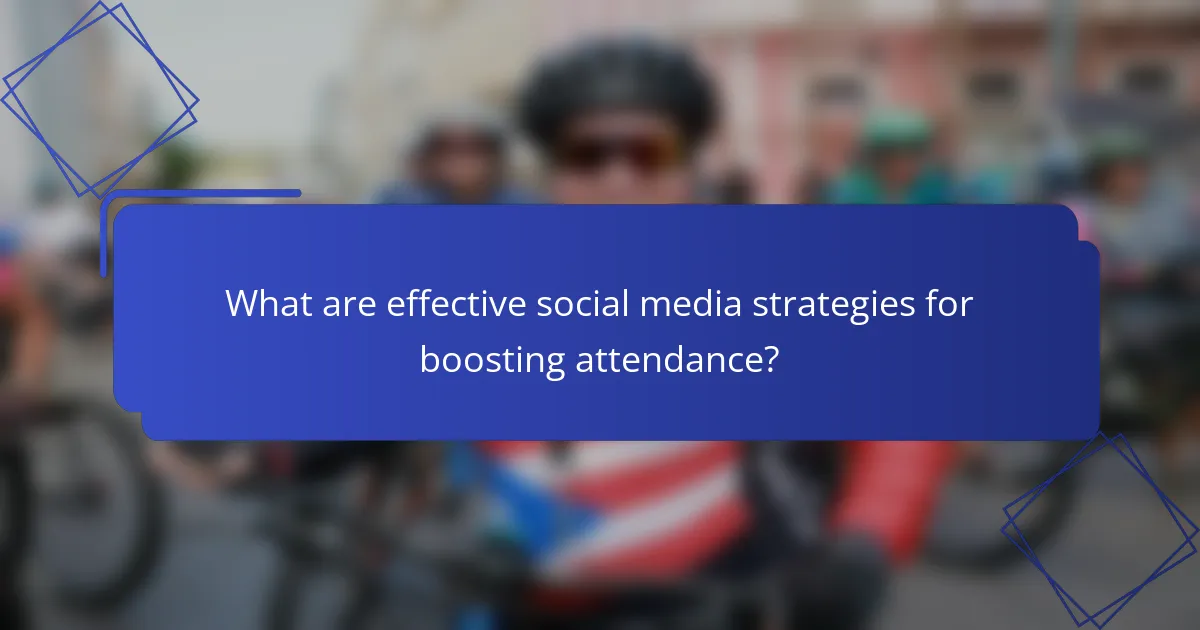
What are effective social media strategies for boosting attendance?
Effective social media strategies for boosting attendance include engaging with audiences through influencer partnerships, creating event-specific hashtags, and leveraging live streaming. These approaches can significantly enhance visibility and interaction, ultimately leading to higher turnout rates.
Utilizing influencer partnerships
Partnering with influencers can amplify your event’s reach and credibility. Influencers have established trust with their followers, making their endorsements powerful tools for attracting attendees.
When selecting influencers, consider their relevance to your event’s theme and audience. Micro-influencers, who often have more engaged followers, can be particularly effective in niche markets.
To maximize impact, provide influencers with exclusive content or experiences to share, encouraging authentic promotion that resonates with their audience.
Creating event-specific hashtags
Event-specific hashtags help consolidate conversations and increase visibility across social media platforms. By encouraging attendees to use a unique hashtag, you can create a sense of community and excitement around the event.
Choose a hashtag that is short, memorable, and relevant to the event. Promote it across all marketing materials, including emails and flyers, to ensure maximum participation.
Monitor the hashtag’s usage to engage with attendees and share user-generated content, which can further enhance interest and attendance.
Leveraging live streaming for promotion
Live streaming can serve as a dynamic promotional tool, allowing potential attendees to experience a preview of the event. This can create buzz and encourage more people to attend.
Consider streaming behind-the-scenes content, interviews with speakers, or highlights from previous events. Platforms like Facebook Live or Instagram Live can facilitate real-time interaction, making viewers feel more connected.
Promote your live streams in advance and encourage viewers to share their thoughts or questions, enhancing engagement and interest in attending the actual event.
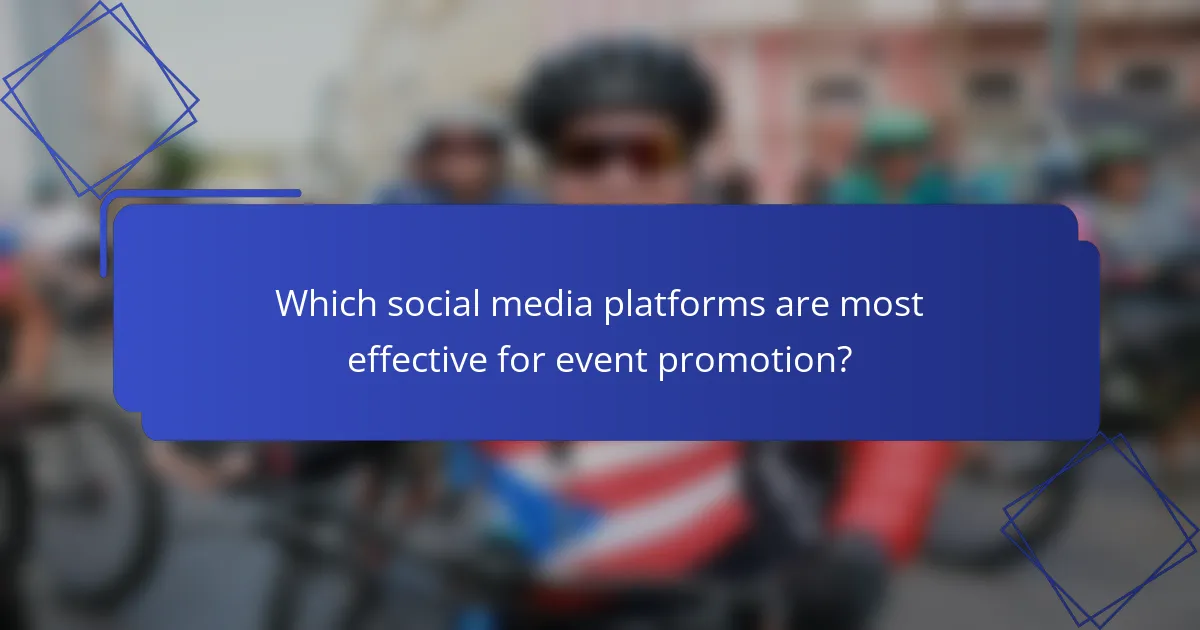
Which social media platforms are most effective for event promotion?
Instagram, Facebook, and Twitter are among the most effective platforms for promoting events. Each platform offers unique features that cater to different audience engagement strategies, making them valuable tools for reaching potential attendees.
Instagram for visual engagement
Instagram excels in visual storytelling, making it ideal for showcasing events through eye-catching images and videos. High-quality visuals can create excitement and anticipation, encouraging users to attend.
Utilize Instagram Stories and Reels to share behind-the-scenes content or sneak peeks of the event. Engaging with followers through polls or Q&A sessions can also boost interaction and interest.
Facebook for event creation and sharing
Facebook is particularly effective for creating dedicated event pages, allowing users to RSVP and share details easily. This feature helps in building a community around the event, facilitating discussions and updates.
Promote the event through targeted ads to reach specific demographics. Encourage attendees to invite friends, as this can significantly increase visibility and attendance.
Twitter for real-time updates
Twitter is best for providing real-time updates and engaging with attendees during the event. Use it to share important announcements, changes, or highlights, keeping your audience informed and engaged.
Incorporate relevant hashtags to increase discoverability and encourage attendees to share their experiences. This can create a sense of community and excitement around the event, even for those who may not attend in person.
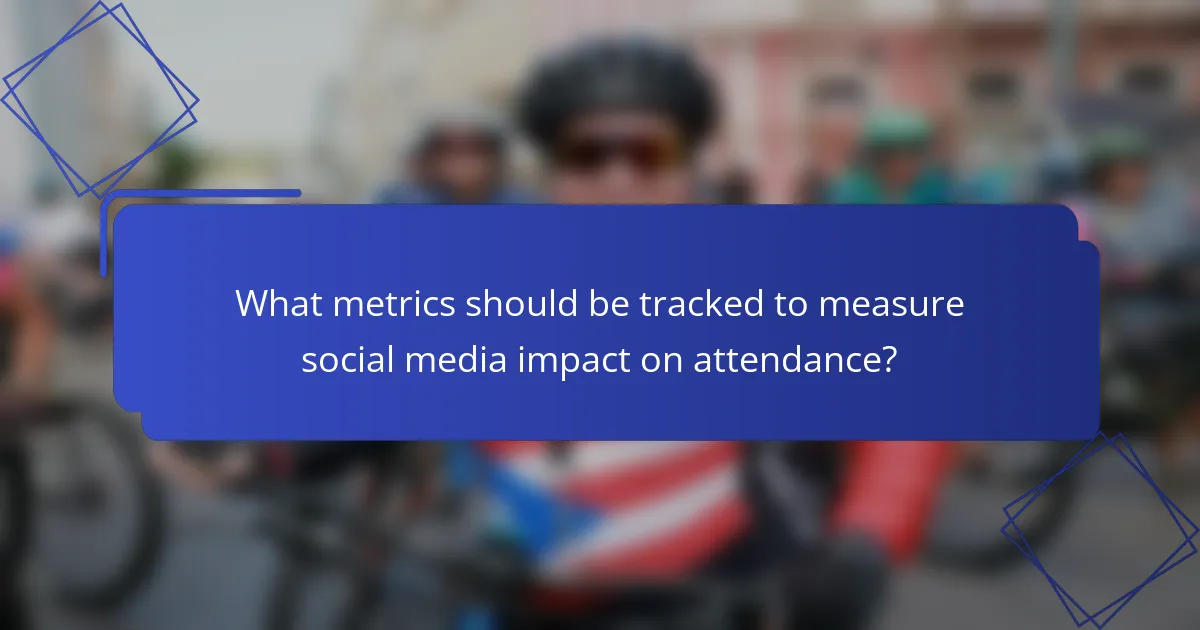
What metrics should be tracked to measure social media impact on attendance?
To effectively measure social media’s impact on attendance, focus on key metrics such as engagement rates, click-through rates, and event registration conversions. These metrics provide insights into how well your social media efforts translate into actual attendance at events.
Engagement rates on posts
Engagement rates reflect how actively your audience interacts with your social media posts. This includes likes, shares, comments, and overall reach. A higher engagement rate typically indicates that your content resonates with your audience, which can lead to increased interest in attending events.
To track engagement rates, calculate the total interactions divided by the total impressions or reach. Aim for engagement rates above 1-3% for organic posts, as this range is generally considered effective. Regularly analyze which types of content generate the most engagement to refine your strategy.
Click-through rates on ads
Click-through rates (CTR) measure the effectiveness of your social media ads in driving traffic to your event registration page. A higher CTR indicates that your ad content and targeting are compelling enough to prompt users to take action. Typically, a CTR of 2-5% is considered good for social media advertising.
To improve CTR, ensure your ads have clear calls to action and visually appealing designs. Test different ad formats and messaging to see what resonates best with your audience. Monitoring CTR can help you adjust your campaigns in real-time for better performance.
Event registration conversions
Event registration conversions track the percentage of users who complete the registration process after clicking through from social media. This metric is crucial for understanding how effectively your social media efforts lead to actual attendance. A conversion rate of 10-20% is often seen as a strong performance in event marketing.
To enhance registration conversions, streamline the registration process and minimize barriers, such as requiring fewer fields or offering incentives. Regularly review your conversion rates and adjust your social media strategies accordingly to optimize attendance outcomes.

How can audience feedback on social media enhance future events?
Audience feedback on social media can significantly improve future events by providing direct insights into attendee preferences and experiences. By analyzing this feedback, organizers can make informed decisions that enhance engagement and satisfaction for upcoming gatherings.
Gathering insights through polls
Using polls on social media platforms is an effective way to gather audience insights. Polls can quickly gauge preferences regarding event topics, formats, or even scheduling, allowing organizers to tailor their offerings to meet audience expectations. For example, a simple poll asking followers to choose between two potential speakers can provide clear direction for planning.
To maximize participation, keep polls short and engaging, ideally with 2-4 options. Consider timing; posting during peak engagement hours can yield higher response rates. Aim for a minimum of 100 responses to ensure a representative sample of your audience.
Monitoring comments for improvement areas
Monitoring comments on social media can reveal valuable areas for improvement. Attendees often share their experiences, highlighting what they enjoyed and what could be better. This qualitative feedback can guide adjustments in logistics, content, or even venue selection for future events.
To effectively analyze comments, categorize feedback into themes such as venue, speakers, or activities. Use sentiment analysis tools to quantify positive and negative sentiments, helping to prioritize changes. Regularly engaging with commenters can also foster a sense of community and encourage more detailed feedback in the future.
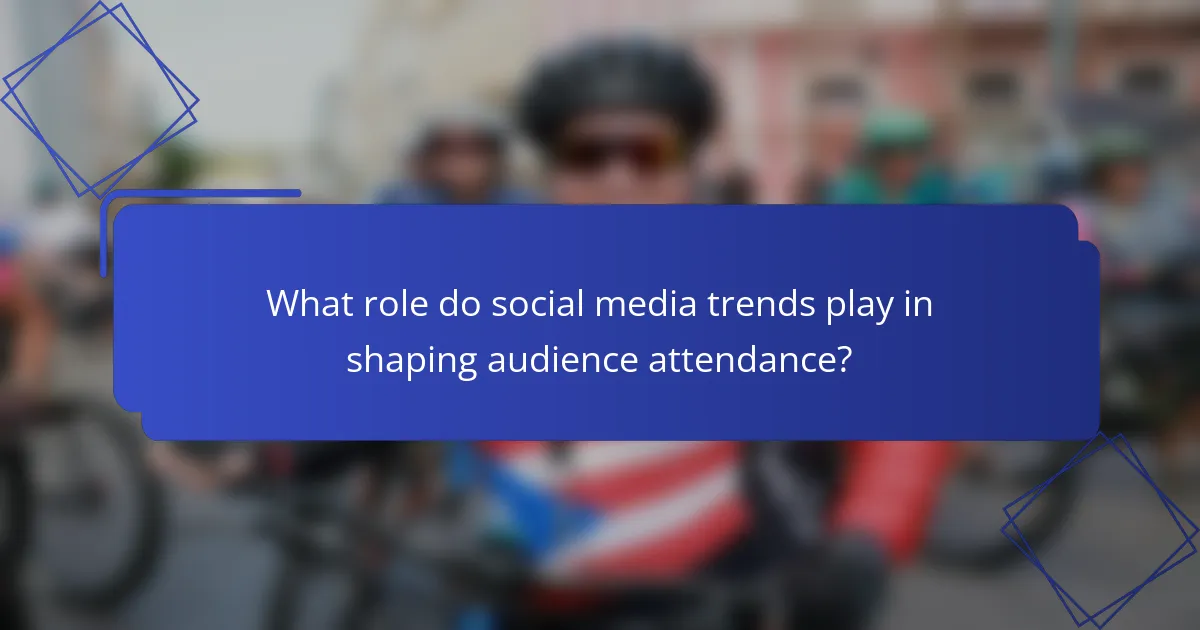
What role do social media trends play in shaping audience attendance?
Social media trends significantly influence audience attendance by creating buzz and engagement around events. Platforms like Instagram, Twitter, and TikTok amplify visibility, making it easier for audiences to discover and participate in various activities.
Adapting to viral content formats
To effectively shape audience attendance, organizations must adapt to viral content formats that resonate with users. This includes utilizing short videos, memes, and interactive posts that encourage sharing and engagement.
For instance, a music festival might create a TikTok challenge related to its lineup, prompting users to participate and share their experiences. This not only increases visibility but also fosters a sense of community among potential attendees.
When creating content, focus on authenticity and relatability. Engaging with trends while maintaining a unique voice can help capture the attention of your target audience and drive attendance.
